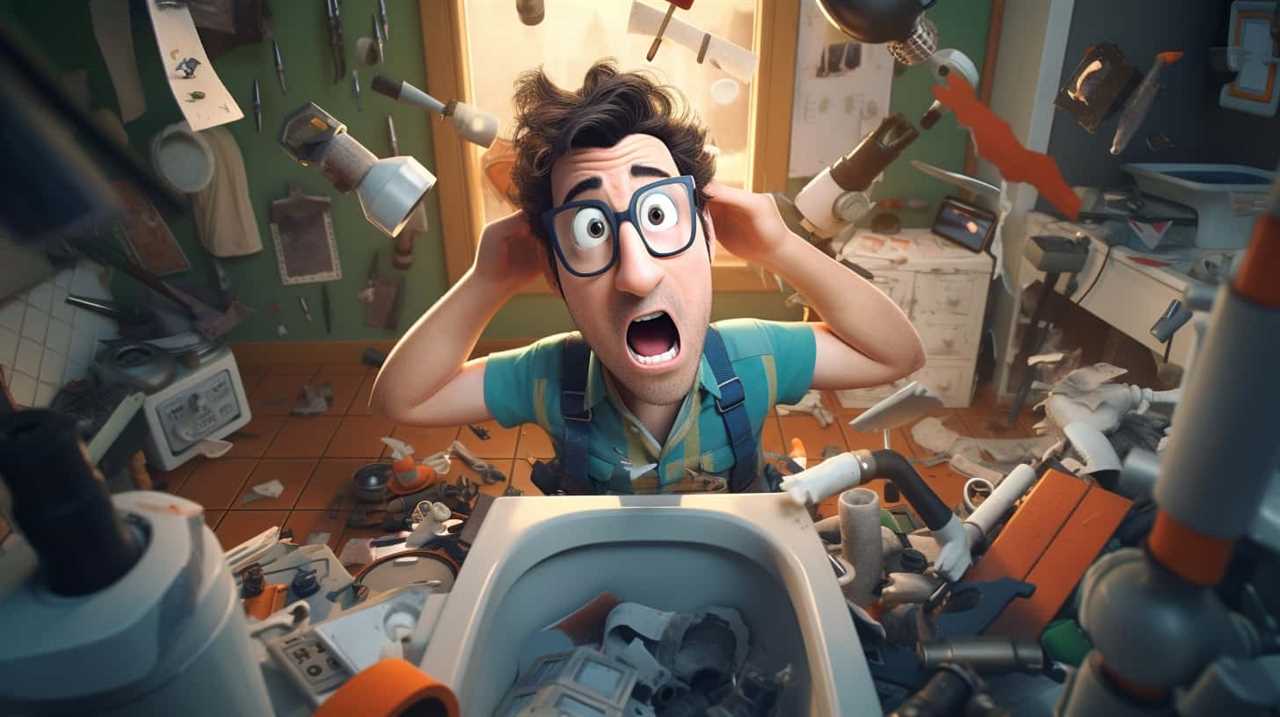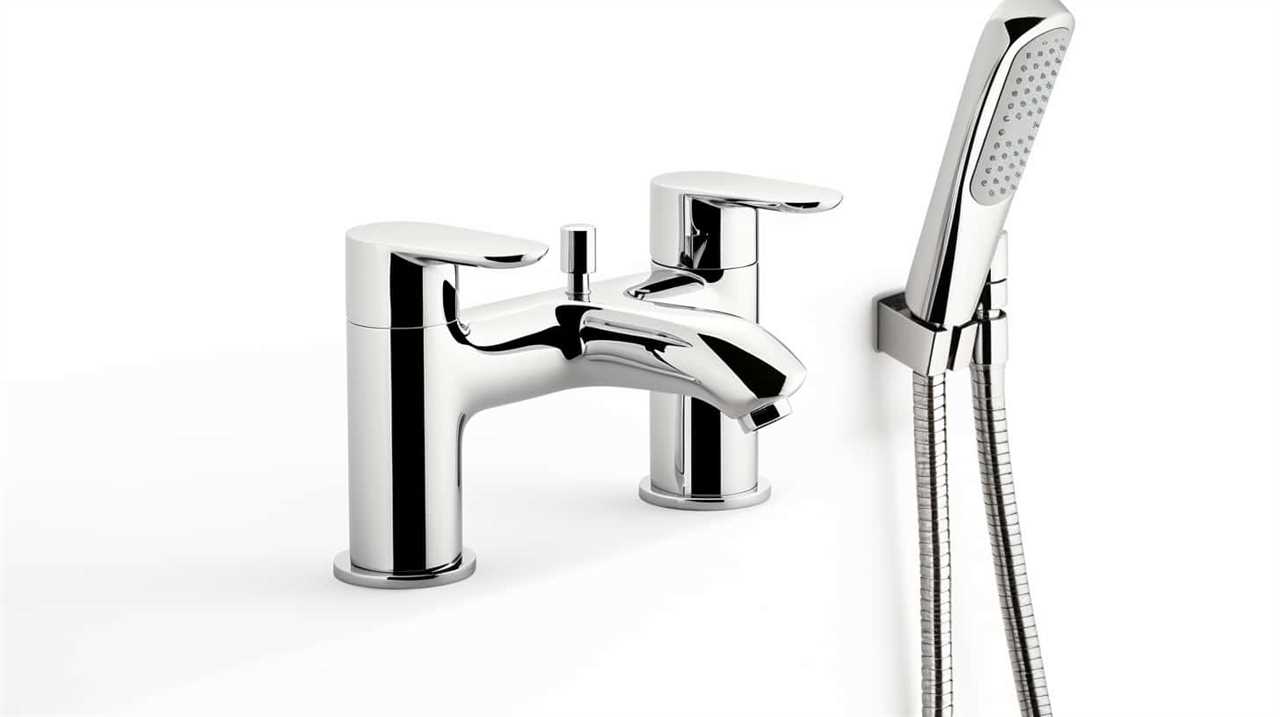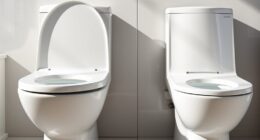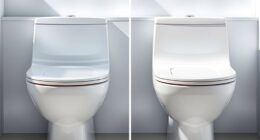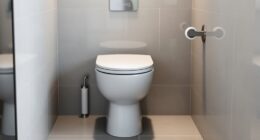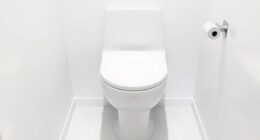When the toilet gets clogged, we are all familiar with the irritation it causes. It’s akin to a barrier preventing the water from flowing smoothly, throwing off our daily schedules.
But fear not, for in this article, we will equip you with the knowledge and tools to tackle this common household problem. From identifying the causes of toilet clogs to effective strategies for unclogging, we’ll guide you step by step towards mastery in maintaining a smoothly flowing toilet.
Say goodbye to clogs and hello to hassle-free plumbing!
Key Takeaways
- Excessive toilet paper usage can overwhelm the plumbing system and lead to clogs.
- Flushing items like wet wipes, feminine hygiene products, or paper towels can also cause blockages.
- Regularly cleaning the toilet prevents the buildup of mineral deposits or residue.
- A toilet plunger is one of the most effective tools for unclogging a toilet.
Common Causes of Toilet Clogs
One of the most common causes of toilet clogs is due to excessive toilet paper usage. When we use an excessive amount of toilet paper, it can easily overwhelm the plumbing system and lead to clogs.
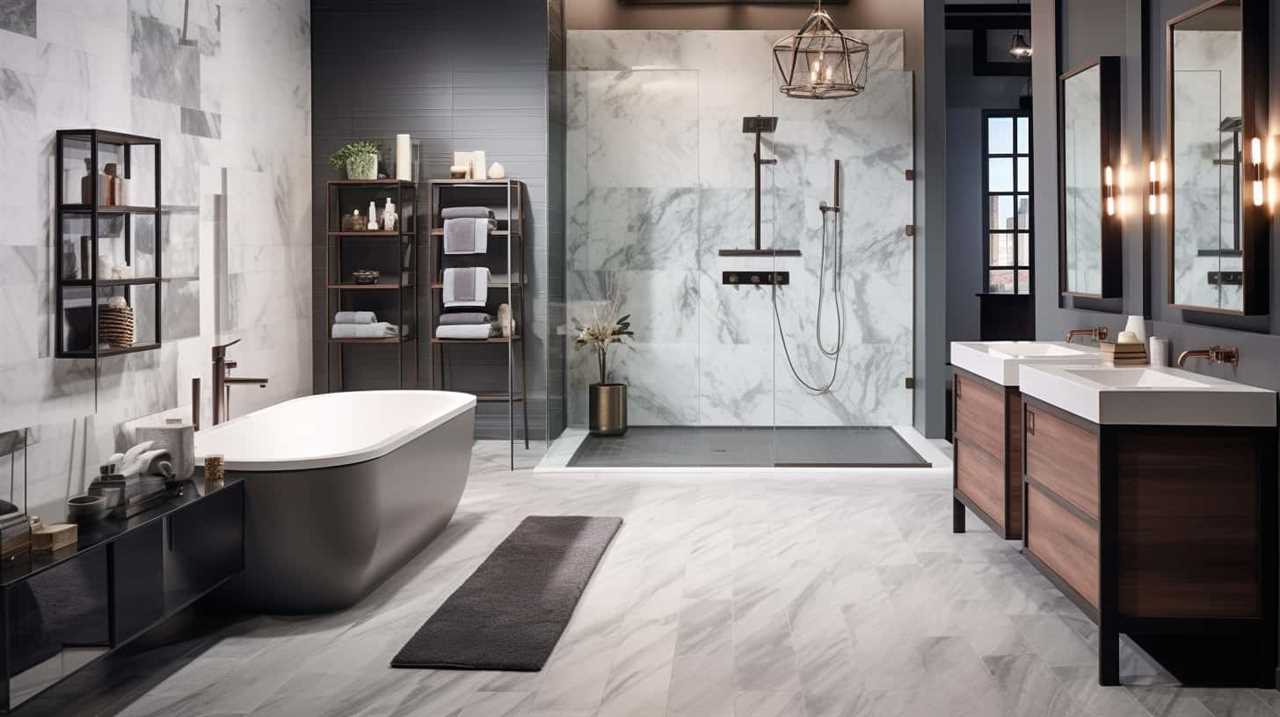
To prevent toilet clogs, it’s important to be mindful of the amount of toilet paper we use. One effective way to reduce the risk of clogs is to use less toilet paper per flush. Another preventive measure is to avoid flushing other items such as wet wipes, feminine hygiene products, or paper towels, as these can also cause blockages.
In case of a clog, there are several DIY toilet unclogging techniques that can be used. These include using a plunger, a toilet auger, or a combination of hot water and dish soap.
Effective Strategies for Unclogging a Toilet
To effectively unclog a toilet, we can continue the discussion on common causes of toilet clogs and explore tried-and-tested methods for clearing the blockage.
When faced with a clogged toilet, one of the most effective tools to have on hand is a toilet plunger. This simple device creates suction, allowing you to dislodge the blockage by exerting pressure and repeating plunging motions. It’s important to ensure a tight seal around the drain opening to maximize the plunger’s effectiveness.

If a plunger isn’t available, you can try using homemade drain cleaners. One popular method involves pouring a mixture of baking soda and vinegar into the toilet bowl, followed by hot water. The chemical reaction created by the ingredients can help break down the clog.
Transitioning into the next section, let’s now explore preventive measures to avoid future toilet clogs.
Preventing Future Toilet Clogs
To prevent future toilet clogs, we can take proactive measures and implement effective strategies. Regular maintenance is key to ensuring a clog-free toilet.
First, be mindful of what you flush down the toilet. Avoid flushing items such as paper towels, sanitary napkins, or baby wipes that can easily cause blockages. Additionally, consider using toilet paper that’s designed to dissolve quickly.
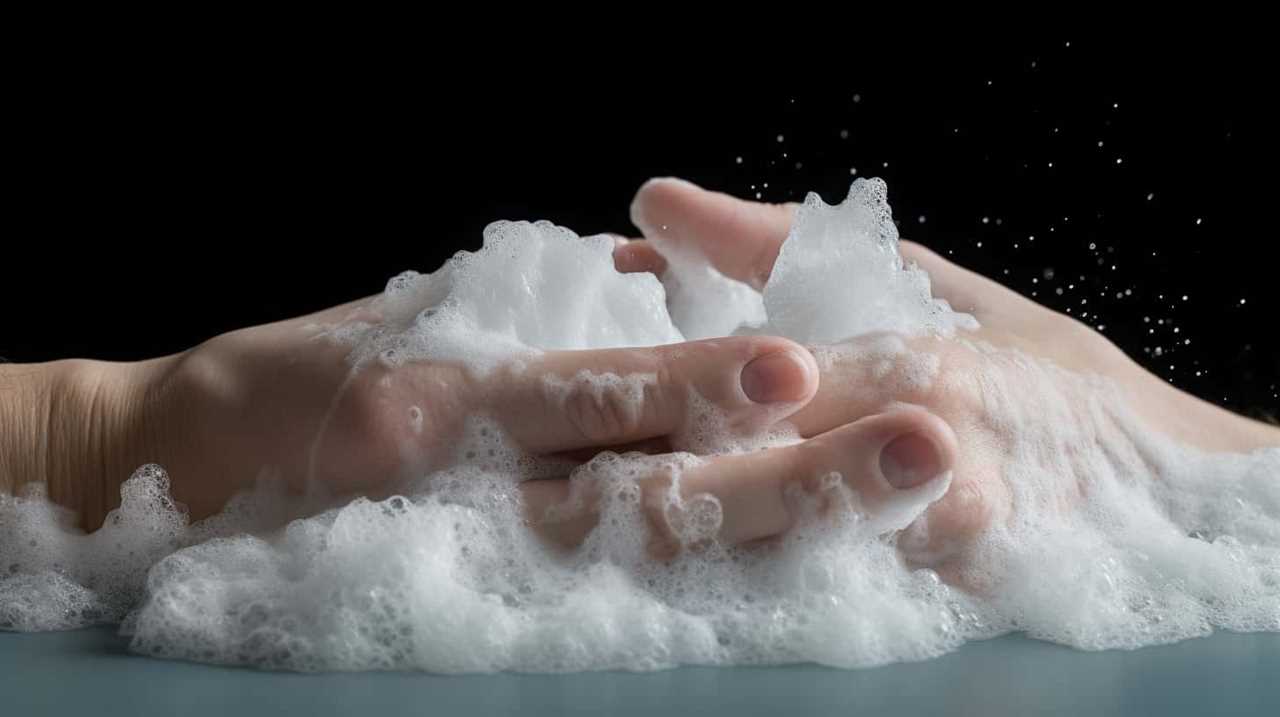
Another important maintenance tip is to clean the toilet regularly. This prevents the buildup of mineral deposits or residue that can lead to clogs.
DIY remedies can also help prevent toilet clogs. For example, using a mixture of baking soda and vinegar followed by hot water can help break down any potential clogs.
Lastly, consider installing a toilet auger or plunger nearby for quick and effective unclogging when necessary.
Tools and Supplies for Unclogging a Toilet
To effectively unclog a toilet, we’ll need specific tools and supplies. Two essential items for tackling a clogged toilet are toilet plungers and drain snakes.
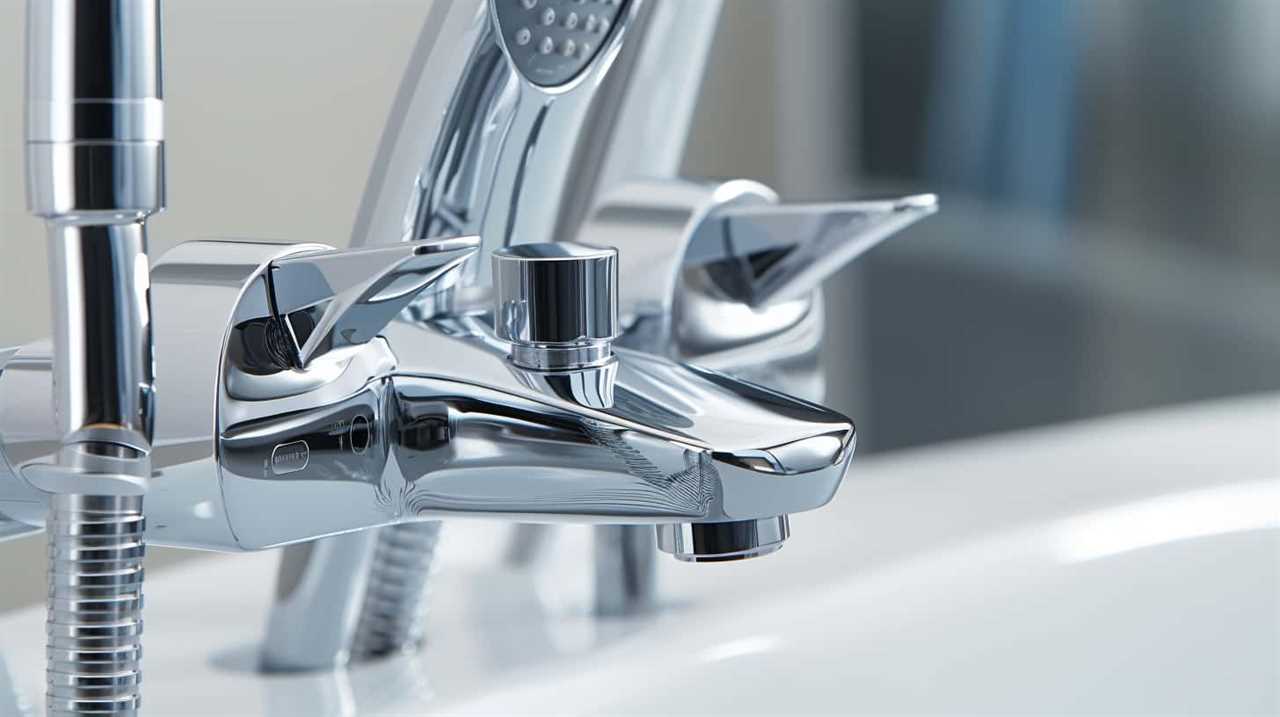
A good quality toilet plunger is a must-have tool for every homeowner. It creates pressure that helps dislodge the clog and restore the normal flow of water. When using a plunger, make sure to create a tight seal around the drain and apply firm, controlled force to push and pull the blockage.
If the plunger doesn’t work, a drain snake can be a valuable tool. It’s a long, flexible metal coil that can reach deeper into the pipes, allowing you to break up or retrieve stubborn clogs.
However, if you have tried these tools and the toilet is still clogged, it might be time to call a professional plumber.
When to Call a Professional Plumber
Sometimes, we may need to call a professional plumber if we’re unable to unclog the toilet using basic tools and methods.

There are certain signs that indicate a serious plumbing issue, such as recurring clogs, slow draining, or water backing up into other fixtures. If you notice any of these signs, it’s best to seek the expertise of a reliable plumber.
When choosing a plumber, consider their experience, qualifications, and customer reviews. Look for plumbers who are licensed, insured, and provide a warranty for their work. Additionally, it’s important to ask for upfront pricing and compare quotes from different plumbers.
Frequently Asked Questions
How Long Does It Usually Take to Unclog a Toilet Using the Strategies Mentioned in the Article?
When the toilet is clogged, the duration to unclog it using the mentioned strategies varies. However, effective toilet unclogging methods can typically resolve the issue within a short period of time.
Can a Toilet Clog Be a Sign of a More Serious Plumbing Issue?
A toilet clog can be a sign of a serious plumbing issue. It is important to be aware of common causes of toilet clogs and signs that indicate a larger problem, such as recurring clogs or slow drainage.
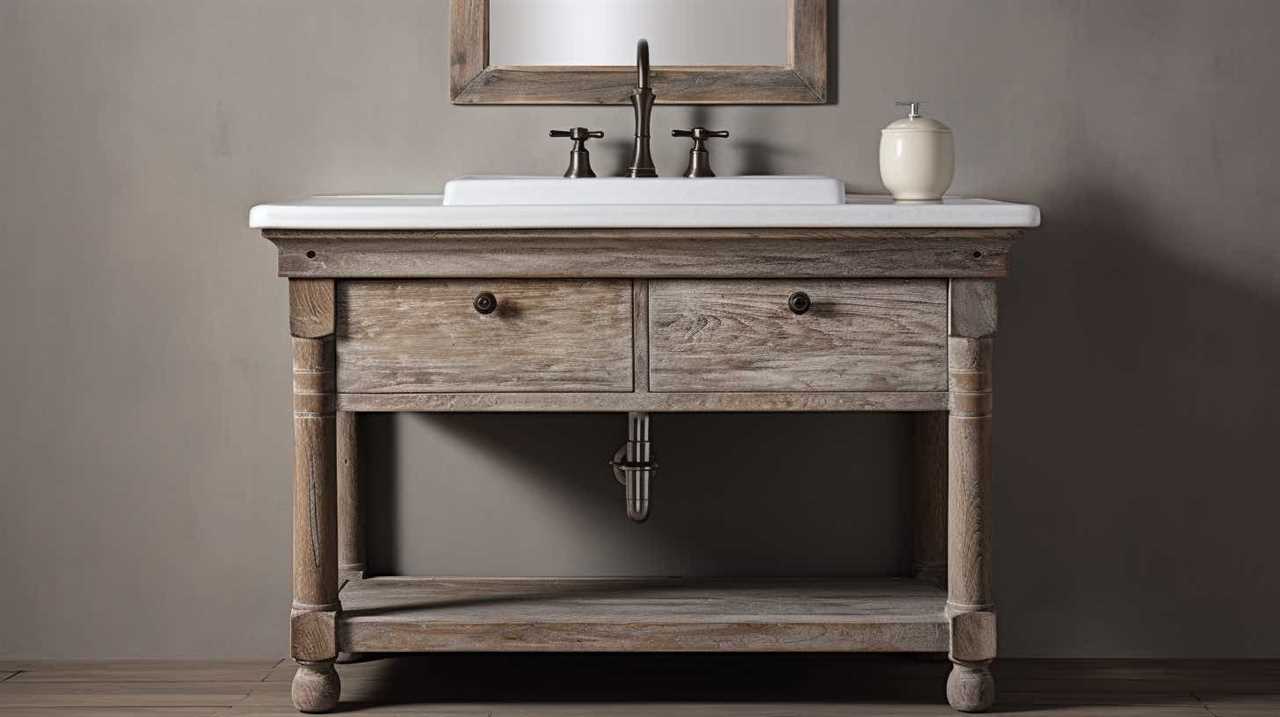
Are There Any Natural or Homemade Remedies That Can Be Used to Unclog a Toilet?
Yes, there are natural remedies and homemade solutions that can be used to unclog a toilet. These alternatives often involve using a combination of hot water, baking soda, vinegar, and a plunger to effectively remove blockages.
Is It Safe to Use Chemical Drain Cleaners to Unclog a Toilet?
When it comes to unclogging a toilet, we must consider safety precautions when using chemical drain cleaners. However, there are alternative methods that can be just as effective without the potential risks.
What Are Some Signs That Indicate a Toilet Clog May Require Professional Help?
Some signs of a toilet clog requiring professional help include persistent clogs, multiple fixtures backing up, and foul odors. While common DIY strategies can help, it’s important to call a professional if these signs persist.
Conclusion
In conclusion, toilet clogs can be a frustrating and inconvenient problem to deal with. However, by understanding the common causes and employing effective strategies, you can quickly unclog your toilet and prevent future clogs.
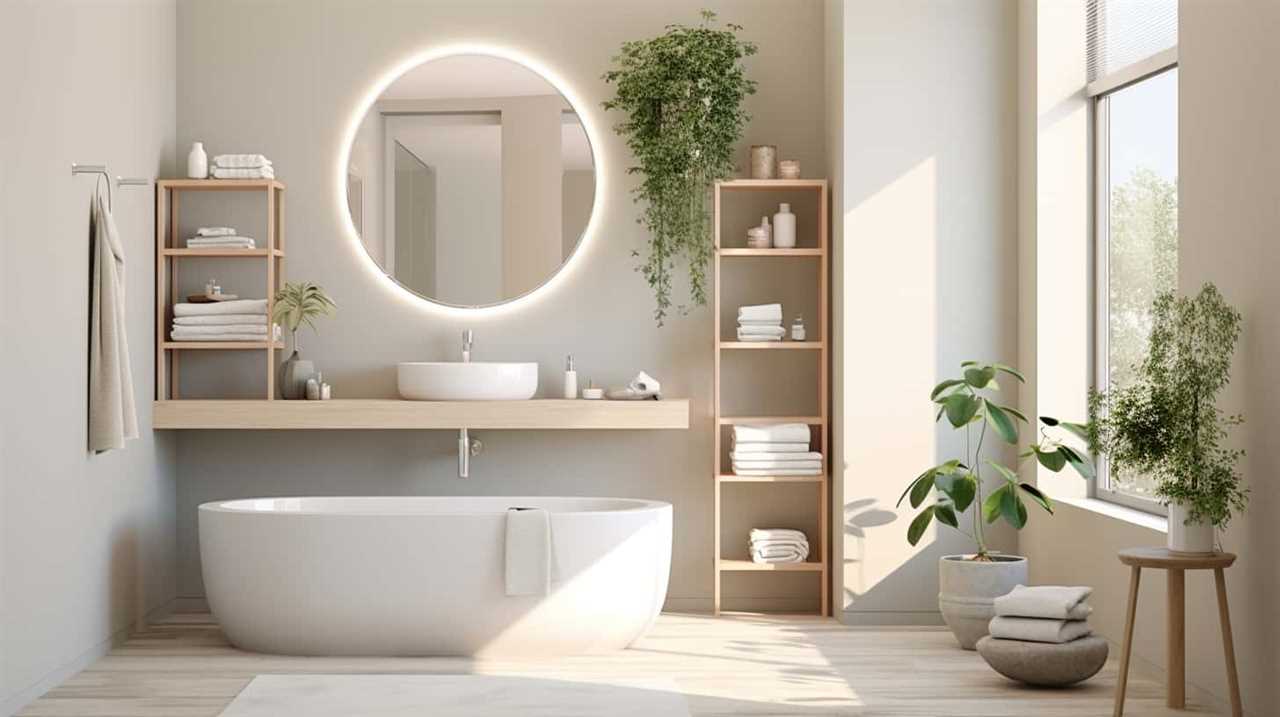
Remember to use the right tools and supplies, and if all else fails, don’t hesitate to call a professional plumber. Just like a well-oiled machine, a properly functioning toilet ensures smooth sailing in your daily routine.
